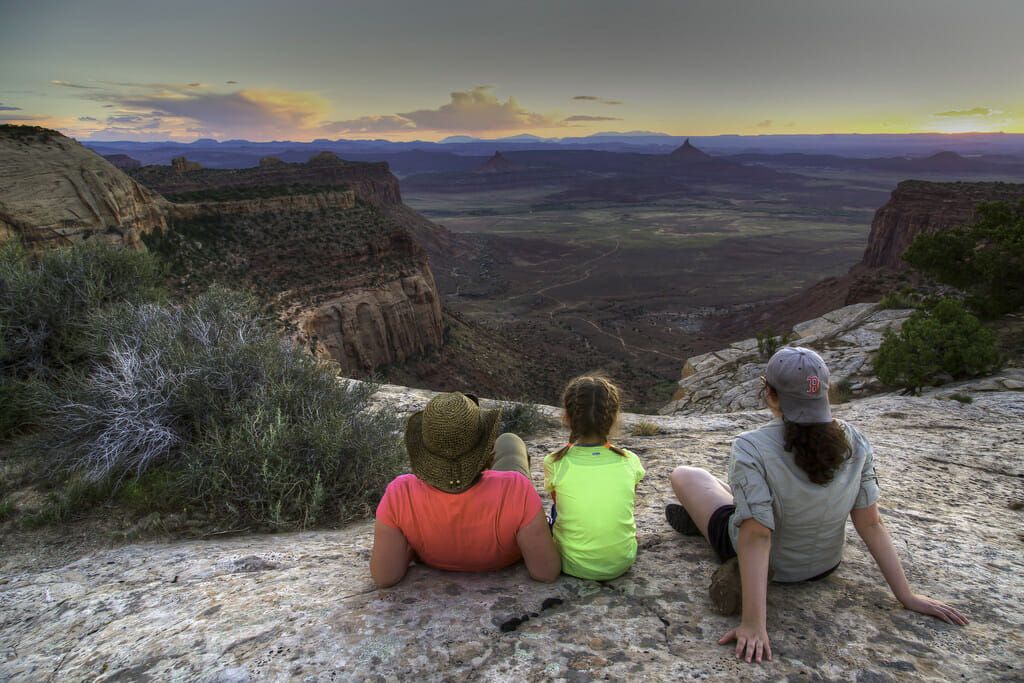Last summer Lady Freethinker reported on the recommendation by the Trump Administration to shrink national monuments, including the contentious Bears Ears National Monument in Utah. Though the message to the public focused on considering all interests and sides of the public lands debate as well as state versus federal rights, it is now known that those things had very little involvement in the decision-making process.
Thanks to a lawsuit by the New York Times, more information has been released on this decision, bringing to light the true motivation: oil and other natural resource extraction. 25,000 pages of emails released by court order illustrate not only the plans and motivations of those involved, but also the extent of deceptiveness and lack of information that was given to the public.
Originally designated as a national monument by President Obama in 2016, the protection of the 1.35 million acres of Bears Ears was a long time coming and desired by many. The documents released by the lawsuit show the extensive steps taken over years to gain information and input from all sides to make the decision. Developers, regional Indian tribes, environmentalists, and state representatives were all included in the process.
We now know that the shrinkage of Bears Ears was proposed in March 2017, months before the administration announced consideration for a review of public land use. In emails from Orrin Hatch, Republican senator from Utah, new boundaries of Bears Ears are suggested. He also states that the adoption of the proposed diminished monument would “resolve all known mineral conflits.” It seems that resolving the conflicts means a one-sided resolution in favor of development.
In contrast to this information, Secretary of the Interior Ryan Zinke, a self-proclaimed lover of public lands, had stated that consideration of shrinkage of Bears Ears did not have to do with natural resource extraction. During a visit to the monument in May he had stated that agency reports showed minimal reason to develop the area, that he made no presumptions as to the final outcome, and that all stakeholders would be considered in the decision.
“Bears Ears isn’t really about oil and gas,” he said, even though he had been in conversation for months with Senator Hatch’s office regarding just that.
An excuse for the natural resource extraction is school funding. A law put in place in the 1800s granted some federal lands as trust lands, allowing economic gain to go back to state institutions, like schools. Senator Hatch’s office claims pushing for resource extraction on public lands benefits the people of Utah. However, the amount of land going back to land trust status was significantly more than was asked for by the Utah School and Institutional Trust Land Administration. The Associate Director of that administration stated, “Obviously they were looking at facts other than the ones we had raised, we assume.”
The released documents also describe the agency’s review process of calculating how much revenue would be made possible by allowing oil, gas, and mineral extraction as well as cattle grazing and timber cutting in the areas of national monuments. These points were actually highlighted in yellow. Also, the decision to shrink the Grand Staircase Escalante National Monument by 47% was prefaced in these discussions.

- Bears Ears National Monument / Flickr
That the administration would be motivated by natural resource development is not a surprise. Environmentalists feared and predicted this from the very beginning. Even the most optimistic of us probably looked upon the assurances to keep public land public with skepticism. Aside from the threat to a unique landscape, the complete lack of consideration for people historically tied to the land, and the inevitable effect on our climate, this story reveals the extent to which the the Trump administration is hiding its workings and intentionally misleading the public. The fact that so many pieces of information, conversations, and motivations had been kept secret from the public eye should be disturbing to everyone, no matter what side you are on in the public lands debate or the political spectrum.
Correction: Ryan Zinke was previously referred to as head of the EPA. In fact, he is interior secretary. The article has been edited to reflect this.







